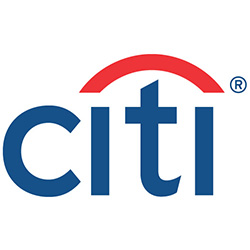Investment Strategies
Citi Private Bank Positions For Pandemic's End

The private bank reflected on how client portfolios should be set up as some light at the end of the tunnel comes into view. Certain sectors hit hard last year still have some room to revert to their long-term state, although that process is likely to run out by 2022.
Although investors have already started to bet on pandemic-hit
sectors reverting to more “normal” conditions, opportunities
remain to push into areas which stand to gain as COVID-19 is
tackled, according to a mid-year update from Citi Private
Bank this week.
The US banking group sees potential in cyclical sectors such as
travel, hospitality, global real estate, and selected national
markets such as Brazilian and UK stocks.
Already, some of the cyclical areas that were hit more than a
year ago have recovered on hopes of the pandemic’s demise. (See
chart.)
.jpg)
Source: Citi Private Bank
At some point in 2022, however, opportunities for investors to
exploit a “mean reversion” trend will run out, Citi Private Bank
said.
From today’s vantage point, the bank said that other
opportunities include global healthcare equities such as medical
technology, life sciences and tools, biotech strategies from
specialist private managers, as well as Southeast Asian countries
that benefit from trade discord between the US and
China.
Citi Private Bank said it also makes sense for clients to add
long-term exposure to strong digital themes when markets correct,
in order to enter these areas at attractive levels. Such areas
include online gaming, streaming entertainment, e-commerce,
cybersecurity and fintech, robotics and telehealth.
“For much of last year, we made the case for exploiting mean
reversion. This involves investing in assets whose prices were
hit hardest by COVID, with the aim of riding the rebound from
depressed levels,” David Bailin, global head of investments and
chief investment officer, Citi Global Wealth, said in a report.
“This theme remains relevant as of early June 2021. However,
there are now fewer such opportunities and less upside potential.
For example, there is no longer scope to earn extraordinary
returns in cyclical manufacturing firms and consumer goods
producers, as these have already snapped back.”
“Right after the pandemic is declared over, we can imagine a
strong global economic recovery that actually feels more normal.
Supply chains will be full of goods. Shippers will have the
containers and vessels in the right locations to meet demand.
Commodity prices that have surged will have stabilised,
reflecting better supply-demand equilibria. The interventions of
governments and central banks will have subsided somewhat,
allowing the economy to function with fewer such unusual
measures. All of this suggests that we can expect some level of
normalcy in our business and personal lives,” Bailin said.
The bank said that the rapid appreciation in 2020 of Chinese
securities, technology shares and US small- and
mid-capitalisation companies suggest to some that the best
opportunities have happened already, and that investors missed
post-pandemic opportunities because of high market valuations.
But the bank disagreed.
“Strong increases in corporate earnings still lie ahead. For many
industries, companies and regions, the ability to exceed 2019’s
revenue, earnings, cash flow and/or dividends is meaningful. This
is because we are still in the early stages of the new economic
cycle,” it said.
A number of themes will outlive the pandemic, Citi Private Bank
said, arguing that healthcare represents the cheapest sector. The
bank is overweight the “unstoppable trend of increasing
longevity.” In aggregate, the sector has never posted a year of
decline in either sales or profits. However, it trades at a 25
per cent valuation discount to the S&P 500.
Last April, Citi Private Bank cut its equity for the first time
since February 2020. Even after lowering its overall allocation,
the bank is 8 per cent overweight global equity. It also stays 8
per cent underweight fixed income and cash due to the prevalence
of negative real yields in these areas.